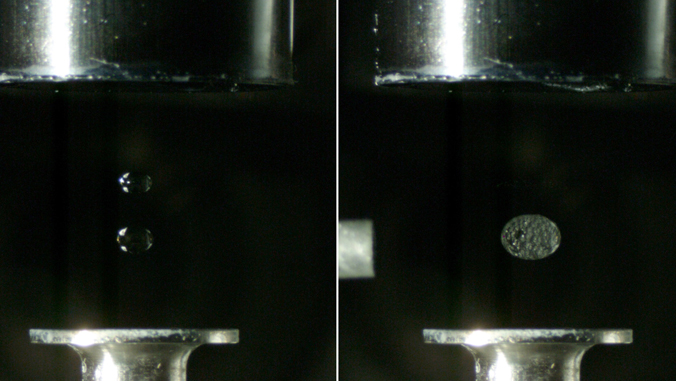An innovative method of using levitation to perform ‘touchless’ chemical reactions has been developed by University of Hawaiʻi at Mānoa researchers.
Department of Chemistry Professor Ralf I. Kaiser and postdoctoral researcher Stephen Brotton developed the technique using acoustic levitation to conduct contact-free experiments without using containers or other materials that may affect results. The study was featured in Analytical Chemistry.
‘Scientific motivation’ drives method
Existing electromagnetic levitation methods generally require objects to have certain physical properties, such as an electric charge or magnetism. Previously developed acoustic levitation techniques used sound waves to suspend an object in a gas, but proved difficult to obtain measurements as chemical reactions occurred.
UH Mānoa’s method features a newly-designed acoustic levitator. Kaiser said “scientific motivation” and existing “intensive research” drove the pair during the process. To test the system, they suspended one droplet above another. Then, the researchers matched the frequency of the modulating sound wave to the natural vibration frequency of the upper droplet to make it oscillate. Both droplets then merged and the chemical reaction was initiated and observed.
“The levitator setup had already been designed and developed at the University of Hawaiʻi at Mānoa over a few years originally for space simulation experiments and material sciences,” Kaiser said. “However, the specific innovation to enable the two droplets to be merged was based on an idea requiring modifications to the apparatus.”
Brotton said that the merging approach passed multiple tests to ensure its effectiveness.
“The four proof-of-concept experiments were successful,” Brotton said. “We therefore learned that the merging approach works well for a wide range of applications and that the physical and chemical changes produced by the merging can be studied in real time via complementary Raman, Fourier-transform infrared and ultraviolet-visible spectroscopies. Additional detection techniques are under development.”
Future studies
Kaiser and Brotton said the method can be used in a wide range of disciplines including
combustion science (jet fuel), material sciences (alloys, chemical vapor deposition), medicinal
chemistry (tracer tagging), planetary sciences (water and hydrocarbon aerosols) and jet engine engineering (volcanic ash).
—By Marc Arakaki


